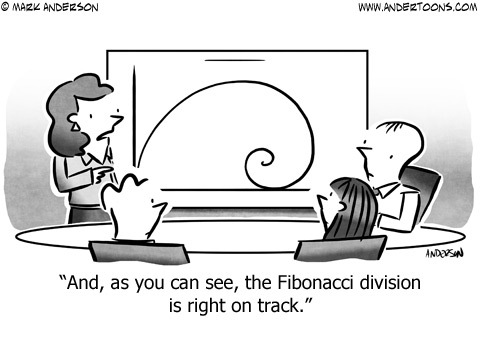I hate to disillusion anyone but I lack hard rules about what qualifies as a mathematically-themed comic strip. During a slow week, more marginal stuff makes it. This past week was going slow enough that I tagged Wednesday’s Quincy rerun, from March of 1979 for possible inclusion. And all it does is mention that Quincy’s got a mathematics test due. Fortunately for me the week picked up a little. It cheats me of an excuse to point out Ted Shearer’s art style to people, but that’s not really my blog’s business.
Also it may not surprise you but since I’ve decided I need to include GoComics images I’ve gotten more restrictive. Somehow the bit of work it takes to think of a caption and to describe the text and images of a comic strip feel like that much extra work.
Roy Schneider’s The Humble Stumble for the 13th of May is a logic/geometry puzzle. Is it relevant enough for here? Well, I spent some time working it out. And some time wondering about implicit instructions. Like, if the challenge is to have exactly four equally-sized boxes after two toothpicks are moved, can we have extra stuff? Can we put a toothpick where it’s just a stray edge, part of no particular shape? I can’t speak to how long you stay interested in this sort of puzzle. But you can have some good fun rules-lawyering it.

Jeff Harris’s Shortcuts for the 13th is a children’s informational feature about Aristotle. Aristotle is renowned for his mathematical accomplishments by many people who’ve got him mixed up with Archimedes. Aristotle it’s harder to say much about. He did write great texts that pop-science writers credit as giving us the great ideas about nature and physics and chemistry that the Enlightenment was able to correct in only about 175 years of trying. His mathematics is harder to summarize though. We can say certainly that he knew some mathematics. And that he encouraged thinking of subjects as built on logical deductions from axioms and definitions. So there is that influence.

Dan Thompson’s Brevity for the 15th is a pun, built on the bell curve. This is also known as the Gaussian distribution or the normal distribution. It turns up everywhere. If you plot how likely a particular value is to turn up, you get a shape that looks like a slightly melted bell. In principle the bell curve stretches out infinitely far. In practice, the curve turns into a horizontal line so close to zero you can’t see the difference once you’re not-too-far away from the peak.

Jason Chatfield’s Ginger Meggs for the 16th I assume takes place in a mathematics class. I’m assuming the question is adding together four two-digit numbers. But “what are 26, 24, 33, and 32” seems like it should be open to other interpretations. Perhaps Mr Canehard was asking for some class of numbers those all fit into. Integers, obviously. Counting numbers. Compound numbers rather than primes. I keep wanting to say there’s something deeper, like they’re all multiples of three (or something) but they aren’t. They haven’t got any factors other than 1 in common. I mention this because I’d love to figure out what interesting commonality those numbers have and which I’m overlooking.

Ed Stein’s Freshly Squeezed for the 17th is a story problem strip. Bit of a passive-aggressive one, in-universe. But I understand why it would be formed like that. The problem’s incomplete, as stated. There could be some fun in figuring out what extra bits of information one would need to give an answer. This is another new-tagged comic.

Henry Scarpelli and Craig Boldman’s Archie for the 19th name-drops calculus, credibly, as something high schoolers would be amazed to see one of their own do in their heads. There’s not anything on the blackboard that’s iconically calculus, it happens. Dilton’s writing out a polynomial, more or less, and that’s a fit subject for high school calculus. They’re good examples on which to learn differentiation and integration. They’re a little more complicated than straight lines, but not too weird or abstract. And they follow nice, easy-to-summarize rules. But they turn up in high school algebra too, and can fit into geometry easily. Or any subject, really, as remember, everything is polynomials.

Mark Anderson’s Andertoons for the 19th is Mark Anderson’s Andertoons for the week. Glad that it’s there. Let me explain why it is proper construction of a joke that a Fibonacci Division might be represented with a spiral. Fibonacci’s the name we give to Leonardo of Pisa, who lived in the first half of the 13th century. He’s most important for explaining to the western world why these Hindu-Arabic numerals were worth learning. But his pop-cultural presence owes to the Fibonacci Sequence, the sequence of numbers 1, 1, 2, 3, 5, 8, and so on. Each number’s the sum of the two before it. And this connects to the Golden Ratio, one of pop mathematics’ most popular humbugs. As the terms get bigger and bigger, the ratio between a term and the one before it gets really close to the Golden Ratio, a bit over 1.618.

So. Draw a quarter-circle that connects the opposite corners of a 1×1 square. Connect that to a quarter-circle that connects opposite corners of a 2×2 square. Connect that to a quarter-circle connecting opposite corners of a 3×3 square. And a 5×5 square, and an 8×8 square, and a 13×13 square, and a 21×21 square, and so on. Yes, there are ambiguities in the way I’ve described this. I’ve tried explaining how to do things just right. It makes a heap of boring words and I’m trying to reduce how many of those I write. But if you do it the way I want, guess what shape you have?
And that is why this is a correctly-formed joke about the Fibonacci Division.


